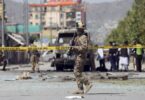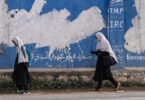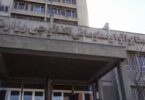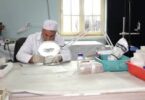Two separate oath taking ceremonies were held in the Presidential Palace in Kabul, one for Dr. Ashraf Ghani a declared winner of polls held in September last year and the other by his rival former Chief Executive Abdullah Abdullah. The events unfortunately reflects a political divide on ethnic lines, which dates back to the Afghan Tanzimat era after the fall of government of President Najeebullah when his frantic efforts for the transfer of power to Afghan groups through UN efforts failed.
Abdullah Abdullah, an ethnic Tajik, had neither accepted the results of previous presidential elections nor the ones announced in February for the polls held last year. But previously efforts of the United States had ended the difference between the two rivals, one Pukhtun and the other Tajik. Abdullah Abdullah had accepted to take the office of Chief Executive then. But this US point-man on Afghan conflict ZalmayKhalilzad could not bring rapprochement between Ashraf Ghani and Abdullah Abdullah.
International community accepted Ashraf Ghani as genuinely elected President of Afghanistan for the second term as his oath taking ceremony was attended by the US Special envoy for Afghanistan ZalmayKhalilzad, a signatory of Doha Deal between the US and the Taliban, US Charge de Affair in Kabul NATO forces Commander in Afghanistan, Ambassadors of European countries and a political delegation from Pakistan. Prime Minister Imran Khan felicitated President AsharafGhani on assuming the office for the second term. Likewise, Foreign Office in a statement extended felicitations to him. The statement also urged the Afghan leaders to show sagacity, eschew blame game, resolve mutual differences and unite in the supreme interest of their country. It is timely caution from a neighboring Islamic country as the deepening rift in Kabul government will certainly weaken its position in the upcoming intra-Afghan dialogue to reach a political settlement for the formation of a broad-based government in Afghanistan.
The United States and Russia have agreed to work together and garner the support of other counties to prevent the restoration of “Islamic Emirate of Afghanistan,” which refers to the earlier government of the Taliban in Kabul formed after the capture of Capital and eastern and southern provinces of Afghanistan in 1996.Pakistan had recognized that government. In joint statement released by the State Department a few days ago, the US and Russia welcomed the Taliban commitment to a political process and their prospective role in the post US-Taliban as determined by intra-Afghan dialogue.
After the fall of Najeebullah regime in November 1992, it was tacitly to rotate the office of president among the leadership of Afghan groups for three months terms till the formation of an elected government. SibghatullahMujadedi of JabhaNijatMilli had been installed as first as president for the stipulated term . He stepped down after completing three months term and was succeeded by Jamiate-i-Islami Chief BurhanudinRabani, an ethnic Tajik. He refused to stepped down after completing his term and the ensuing war among different Afghan groups created a political and administrative vacuum for the emergence of Taliban in Qandahar in 1996 which later culminated in the capture of Kabul by them, leading to a long drawn battle between the Northern Alliance comprising ethnic groups of Tajiks, Uzbeks, Hazaras and Turkmen and Taliban of Puktun race. Hopefully, this time around Afghan leaders will demonstrate foresight to avoid once again the return of anarchy to Afghanistan.






